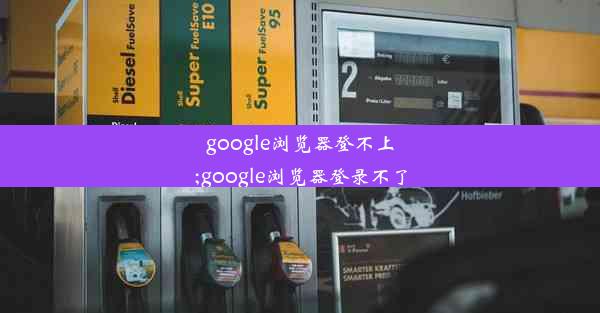谷歌浏览器英文翻译中文翻译不了
 谷歌浏览器电脑版
谷歌浏览器电脑版
硬件:Windows系统 版本:11.1.1.22 大小:9.75MB 语言:简体中文 评分: 发布:2020-02-05 更新:2024-11-08 厂商:谷歌信息技术(中国)有限公司
 谷歌浏览器安卓版
谷歌浏览器安卓版
硬件:安卓系统 版本:122.0.3.464 大小:187.94MB 厂商:Google Inc. 发布:2022-03-29 更新:2024-10-30
 谷歌浏览器苹果版
谷歌浏览器苹果版
硬件:苹果系统 版本:130.0.6723.37 大小:207.1 MB 厂商:Google LLC 发布:2020-04-03 更新:2024-06-12
跳转至官网

The Mysterious Case of Google Chrome's Translation Glitch: Can't Translate Chinese?
In the digital age, language barriers are often just a click away, thanks to translation tools like Google Chrome's built-in translation feature. However, there's a peculiar case where Google Chrome fails to translate Chinese text. This article delves into the mystery of why this happens and what it means for users who rely on this convenient feature.
---
Understanding the Translation Glitch
The first thing to understand is that Google Chrome's translation feature relies on Google Translate's vast database and algorithms. When you encounter a page with Chinese text that won't translate, it's often due to one of several reasons.
1. Limited Language Support: Google Translate supports a wide range of languages, but there are always exceptions. If the Chinese text is from a rare dialect or a language that Google Translate hasn't fully indexed, it might not translate correctly.
2. Complex Characters: Chinese characters can be highly complex and have multiple meanings depending on the context. If the text contains characters that are not commonly used or are part of a specialized field, the translation might be inaccurate or fail entirely.
3. Script Differences: Google Chrome uses Unicode to render text, which supports a vast array of scripts. However, some characters or symbols might not be properly recognized or rendered, leading to translation errors.
---
Impact on Users
The inability to translate Chinese text in Google Chrome can be frustrating for users, especially those who rely on this feature for work or study.
1. Communication Hurdles: For users who need to communicate with Chinese speakers or read Chinese content, the lack of translation can create significant communication barriers.
2. Educational Challenges: Students learning Chinese might find it difficult to access educational materials if the translation feature fails to work.
3. Business Implications: Companies dealing with Chinese markets might face challenges in understanding product descriptions, customer feedback, or market research data.
---
Workarounds and Solutions
While Google Chrome's translation glitch can be problematic, there are several workarounds and solutions that users can try.
1. Use Alternative Translation Tools: If Google Translate isn't working, users can try other translation services like DeepL or Microsoft Translator.
2. Manual Translation: For users who are proficient in Chinese, manually translating the text can be a viable option, though it can be time-consuming.
3. Browser Extensions: There are browser extensions available that can offer additional translation capabilities or alternative methods to access translated content.
---
Future of Translation Technology
The issue with Google Chrome's translation glitch highlights the ongoing challenges in translation technology. Here are some potential future developments:
1. Improved Language Models: As machine learning advances, language models are becoming more sophisticated, which could potentially reduce translation errors.
2. Customizable Dictionaries: Users might have the option to create and maintain their own dictionaries for specific terms or phrases, improving the accuracy of translations.
3. Real-Time Translation: The integration of real-time translation features could make it easier for users to communicate across language barriers without relying on static text translations.
---
In conclusion, while Google Chrome's translation glitch can be a source of frustration, it also serves as a reminder of the ongoing challenges in translation technology. By understanding the reasons behind these errors and exploring alternative solutions, users can navigate these hurdles more effectively. As technology continues to evolve, the hope is that these issues will be addressed, making language barriers a thing of the past.












